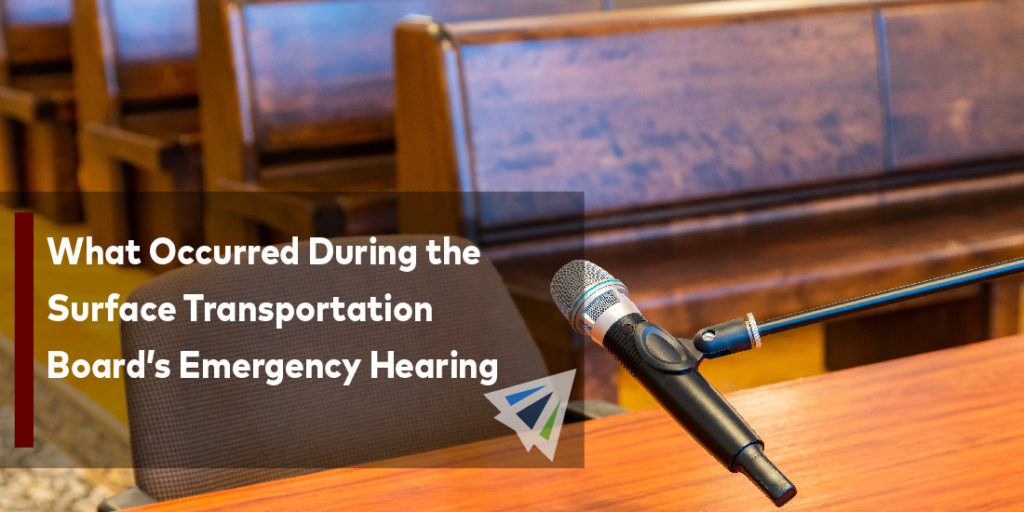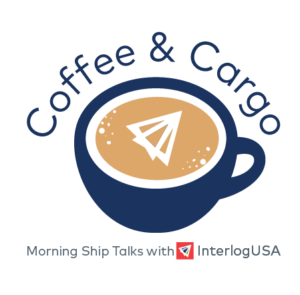Competitive Edge
May 11th, 2022
Stay Current with Interlog’s Weekly Newsletter:
Sign up for our next Coffee & Cargo webinar –> CLICK HERE
To watch last month’s webinar –-> CLICK HERE
Any topics you want discussed in our next webinar? –-> EMAIL US TODAY
Headlines
- Contract negotiations between the International Longshore and Warehouse Union (ILWA) and the Pacific Maritime Association (PMA) began May 10. The two parties’ current contract is set to expire July 1, 2022. Information courtesy of Supply Chain Dive. See below for more information.
- The Alabama State Port Authority recently posted their April 2022 results for container volumes through the Port of Mobile, they reported a 39.7 percent increase year-over-year, Port Technology states.
UPDATE: Notable U.S./Canada Port Congestion as of 05/10/22
- Vancouver: 25 Backlogged Vessels
- Houston: 18 Backlogged Vessels
- Norfolk/Newport News: 22 Backlogged Vessels
- Los Angeles/Long Beach: 11 Backlogged Vessels
- New York/Newark: 11 Backlogged Vessels
- San Francisco/Oakland: 10 Backlogged Vessels
- Savannah: 4 Backlogged Vessels
- Charleston: 2 Backlogged Vessels
Courtesy: MarineTraffic
IMPORT: Asia to North America (TPEB)
Recent Developments:
- Carriers have reallocated more ships to USEC services from the USWC.
- Lockdown measures imposed in Shanghai and the subsequent impacts of them remain in play. For a closer look, check out our recent newsletter.
- Demand is expected to rise back to elevated levels when Covid-related restrictions ease and the overall situation improves in China.
- Congestion at Los Angeles/Long Beach has slightly alleviated due to impacts of Covid-19 lockdown measures and restrictions in China.
- However, container dwell time still remains within a range of five to seven days as rail infrastructure struggles to handle volumes.
- The usual suspects—severe congestion, deteriorating schedule integrity, port omissions, and blank sailings—remain contributors to an uncertain market.
Rates: Rate levels remain relatively elevated. Premium market remains strong.
Space: Space remains critical and is expected to stay tight.
Capacity: Capacity remains severely under. Data from Alphaliner indicates that capacity from Asia to the USEC grew around 28 percent over the past year opposed to the USWC, which grew around 21 percent within the same timeframe.
Equipment: Equipment deficits remain critical.
TIPS: Book at least 4 weeks prior to CRD. Strongly consider premium service and be flexible as it comes to equipment and routing. Additionally, be in contact with suppliers to check up on any Covid-related developments that can affect production.
IMPORT: Europe to North America (TAWB)
Recent Developments:
- USWC ports remain congested. However, wait times for vessels have cut down to 20 days at Los Angeles/Long Beach ports.
- On the USEC, the Port of Charleston has reaped dramatic improvements to its operations and has significantly decreased its number of waiting vessels offshore.
Rates: Tightened capacity and fully booked vessels have led to increases in rates.
Space: Space is critical for USEC and USWC.
Capacity: Capacity for both North Europe and Mediterranean services remain gripped.
Equipment: Equipment remains available at European seaports. However, inland terminals in Europe are still reporting equipment shortages.
TIPS: Book 5 or more weeks prior to CRD. Shippers are strongly advised to consider premium service for no-roll options and improved reliability for their cargo.
EXPORT: North America to Asia
Recent Developments:
- Congestion remains considerable at some USEC ports—notably, New York/Newark.
- Diminishing schedule integrity is contributing to void sailings, delays, vessel cut-offs at ports, and challenging post earliest return dates.
- Vessel arrivals remain fluid for USWC POLs.
Rates: GRI activity (limited) announced for May.
Capacity: Available capacity remains fluid for USWC POLs.
Equipment: Truck and chassis availability remain causes for concern and has significantly contributed to congestion of the intermodal system.
TIPS: Book 4 to 6 weeks prior to ETD to secure equipment and vessel space.
Did You Know: USWC longshore labor union talks have begun
On May 10th, talks and negotiations between the International Longshore and Warehouse Union and the Pacific Maritime Association.
Talks will continue to be scheduled on a daily basis until an agreement is reached, with both sides expecting cargo to keep flowing until the agreement is reached.
We will continue to keep you informed with the latest updates regarding this situation.
Source: Supply Chain Dive
Freight News
Port of Long Beach begins work on Pier B Rail Project
Just last month the Port received final approval from the U.S. Maritime Administration (MARAD) for the $1.5 billion project at the Port. The next steps are receiving two coastal development permits (which are currently pending), from the Los Angeles and California Coastal Commission – Port Technology reports.
The Port B On-Dock Rail Support Facility will increase on-dock rail efficiency, reduce shipping costs and shrink the supply chain’s carbon footprint. Additionally, this project will have a full-service staging facility which will allow trains up to 20,000 feet (nearly 4 miles long), to be assembled or broken down safely and efficiently – Port Technology reports.
After the project is completed in 2032 (if all goes well), the facility will more than double the size of the existing yard, it will also add more than 130,000 feet of rail – Container News reports.
The Trans-Atlantic air freight market is ‘red hot’, as congestion continues on the USEC
For the past year, ports on the USEC have been dealing with a rollercoaster of congestion with overwhelmed terminals, which have led to vessel backlogs outside the ports of Charleston, Savannah, New York and New Jersey, and Virgina – the Journal of Commerce reports. Now the trans-Atlantic air freight market is exceptionally hot, in both directions. Because of this, some experts have been seeing more ocean to air conversions as long delays and longer transit times out of Asia to the USEC has been apparent. Air cargo space restrictions are still apparent and rising, as available capacity on the trans-Atlantic lane (in April) rose above pre-pandemic levels for the first time since 2020 – the JOC reports.
Furthermore, as the end of 2021 occurred, the cost to move goods by air was 2.5 times more expensive than it was before the pandemic began. A report from TI Research detailed that the “demand for air freight capacity continues to outstrip supply, contributing to increased yields and revenues among airlines.”
Sign up for our
industry answers
Our team works to provide valuable, unique, and relevant content to assist you in finding solutions. Sign up now.


